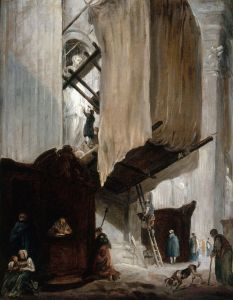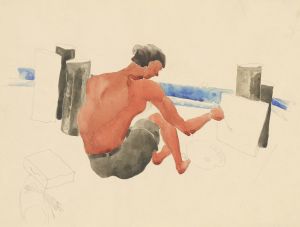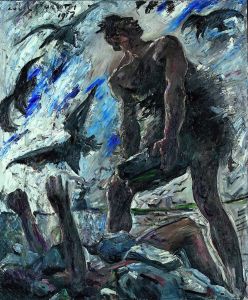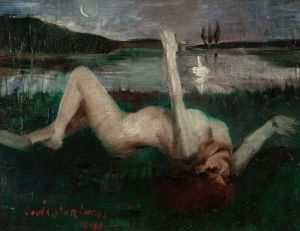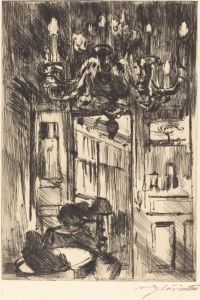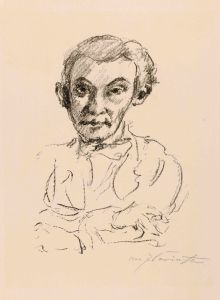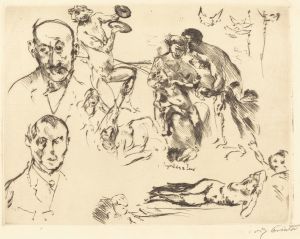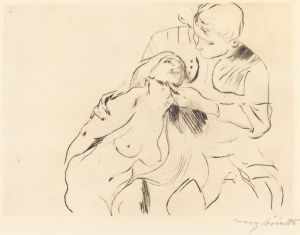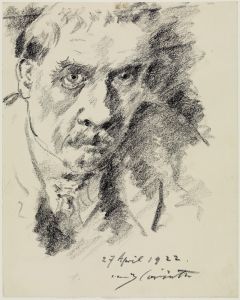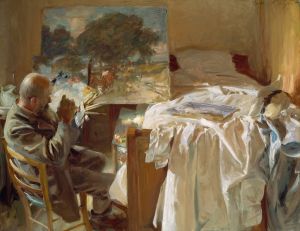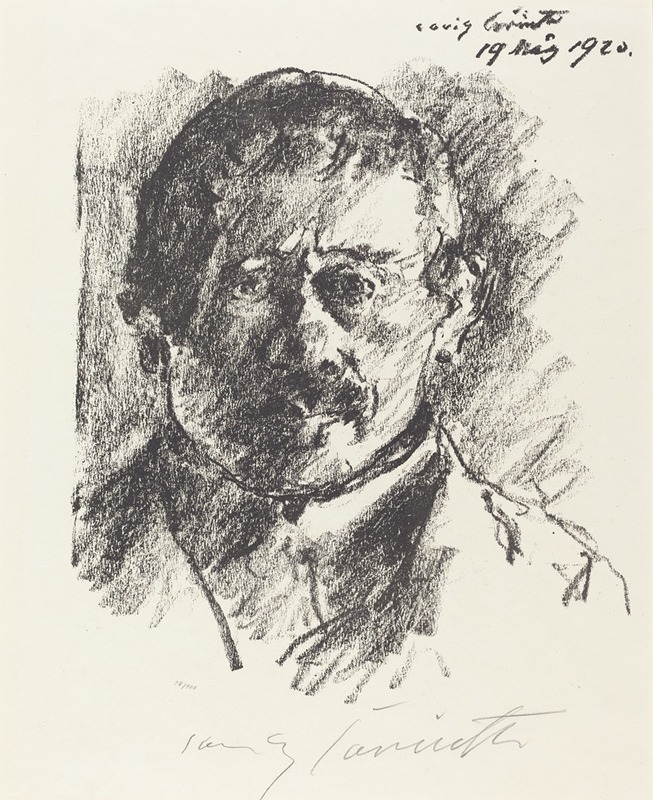
Self-Portrait
A hand-painted replica of Lovis Corinth’s masterpiece Self-Portrait, meticulously crafted by professional artists to capture the true essence of the original. Each piece is created with museum-quality canvas and rare mineral pigments, carefully painted by experienced artists with delicate brushstrokes and rich, layered colors to perfectly recreate the texture of the original artwork. Unlike machine-printed reproductions, this hand-painted version brings the painting to life, infused with the artist’s emotions and skill in every stroke. Whether for personal collection or home decoration, it instantly elevates the artistic atmosphere of any space.
Lovis Corinth, a prominent German painter and printmaker, created several self-portraits throughout his career, reflecting his evolving style and personal circumstances. One of his notable self-portraits is "Self-Portrait with Skeleton," painted in 1896. This work is a significant example of Corinth's exploration of themes such as mortality and the human condition, which were recurrent in his oeuvre.
Born on July 21, 1858, in Tapiau, East Prussia (now Gvardeysk, Russia), Lovis Corinth was a leading figure in the German art scene during the late 19th and early 20th centuries. He studied at the Academy of Fine Arts in Munich and later in Paris at the Académie Julian, where he was influenced by the works of the French Impressionists. Corinth's style evolved from a naturalistic approach to a more expressive and dynamic form of painting, often associated with the German Impressionist movement.
"Self-Portrait with Skeleton" is a striking example of Corinth's mature style, characterized by vigorous brushwork and a bold use of color. In this painting, Corinth depicts himself standing next to a skeleton, a traditional symbol of death. The juxtaposition of the living artist and the lifeless skeleton serves as a memento mori, a reminder of the inevitability of death. This theme was particularly poignant for Corinth, who had a deep interest in the transient nature of life and the passage of time.
The self-portrait is rendered with a sense of immediacy and intensity. Corinth's face is marked by a stern expression, and his eyes engage directly with the viewer, creating a powerful connection. The skeleton, positioned to his right, is painted with meticulous detail, emphasizing its stark contrast to the living figure. The background is relatively simple, allowing the focus to remain on the two central figures.
Corinth's use of light and shadow in this painting is masterful. The light source appears to come from the left, casting shadows that enhance the three-dimensionality of both the artist and the skeleton. The interplay of light and dark areas adds to the dramatic effect of the composition.
Throughout his career, Corinth faced numerous personal challenges, including a severe stroke in 1911 that left him partially paralyzed. Despite this, he continued to paint and even adapted his technique to accommodate his physical limitations. His later works, including self-portraits, often exhibit a more expressive and less controlled style, reflecting his resilience and determination as an artist.
"Self-Portrait with Skeleton" is housed in the Städtische Galerie im Lenbachhaus in Munich, Germany. It remains one of Corinth's most compelling works, offering insight into his artistic vision and his contemplation of life's fragility. The painting is a testament to Corinth's skill as a painter and his ability to convey profound themes through his art.
Lovis Corinth passed away on July 17, 1925, in Zandvoort, Netherlands. His legacy endures through his extensive body of work, which continues to be celebrated for its emotional depth and technical prowess. "Self-Portrait with Skeleton" stands as a powerful representation of Corinth's introspective and existential concerns, making it a significant piece in the history of German art.





